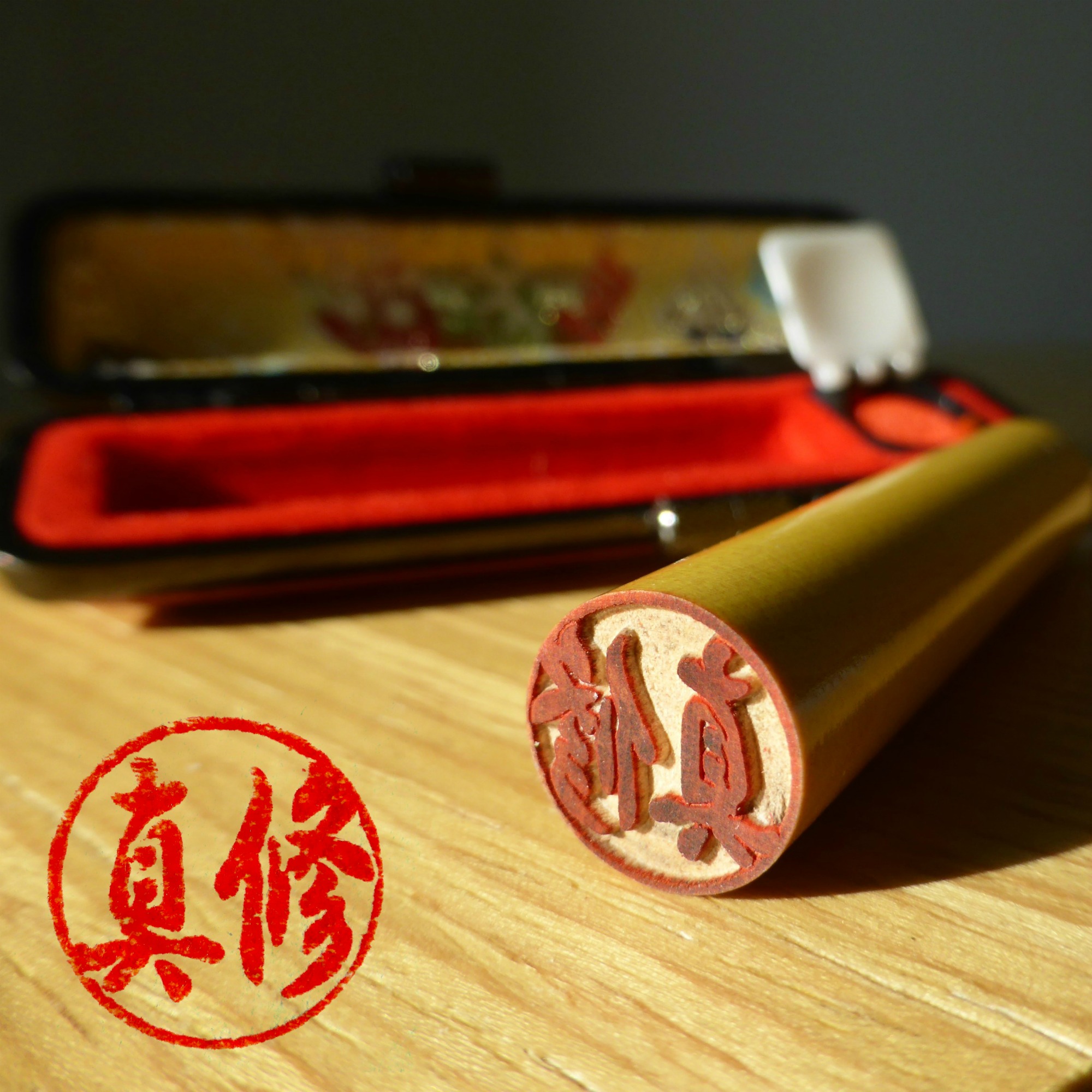Introduction
Japanese seals are called Hanko, In, and Insho. They play an important role in Japanese culture. Seals are used to indicate personal or corporate identity and ownership, and are widely used as a substitute for signatures and seals. This article explores the Japanese seal culture and details its charms and traditions.

Origins and History of Seal
The origin of hanko can be traced back to ancient China. The earliest seals may have consisted of simple designs printed on blocks of earth to identify ownership or to indicate a sacred meaning. As human societies developed, seals gradually evolved into various forms, including their use in different cultures and regions.
In China, seals, known as “yin” (印), appeared as early as the Shang Dynasty (1600 BC to 1046 BC). The first seals were usually made of jade or bronze and were used as symbols of power and status. With the passage of time, the status of seals in political, cultural and social life gradually increased and they became an important symbol of status and authority.
In Japan, hanko have been used since the Nara period (710-794). First used by the nobility and as official seals, they later spread to the general public. Seal were engraved with personal and family symbols and names, and served as identification and personal seals.
Types and Designs of Seal
There are various types of hanko according to material, shape, and design. Typical materials include wood, ivory, stone, metal, and rubber. The shapes of hanko are also varied, including circular, rectangular, and oval. The design of the hanko can be engraved with a personal name, a symbol, or a seal company’s logo.
Symbolic meaning of Seal
Seal has symbolic meaning in Japanese culture and society. Used as official identification in formal contracts and documents, hanko are an important element of personal and corporate credibility. In addition, hanko also has a symbolic meaning of human ties, such as family solidarity, inheritance, and community ties.
What is a “Rakkan-in” (seal of incorporation)?
“Rakkan-in (落款印)” is a personal or organizational seal used primarily in countries such as China, Japan, and Korea. ”Rakkan (落款)” is a special seal engraved with characters or designs containing a name, pen name, or organization’s name. “In (印)” mean seals. “Rakkan-in (落款印)” is affixed commonly around the signatures, ”Rakkan (落款)”, on a work of art or document.
The history of the seals have a long history and has been used in China since B.C. It was originally used by literati and artists for their own signatures. It was originally used by literati and artists to sign their works. In Japan and Korea, the use of the seal of approval was also influenced by the Chinese.
Seals have been used as identities and signatures of individuals and organizations, and have played an important role in art and documents. In Japan, seals are still used for signatures in everyday life today, but their use is gradually decreasing in Japan as the country seeks to become more efficient. On the other hand, in the field of calligraphy as an art form, a work of art includes the seal. Its importance and cultural significance are widely recognized.

Inheritance of Seal Culture to Modern Times
The seal culture has been handed down to the present day in Japan. Many people own hanko and use them for official procedures and personal documents. In Japan, seals are also used in business today. This custom is often raised as an issue as it prevents efficiency. As business becomes more digital and remote, seals are gradually being used less and less.
On the other hand, seals are highly valued as a traditional craft, with its craftsmanship and beautiful engravings. In recent years, seals designs and materials have become more diverse and unique.
Conclusion
With an increasing emphasis on efficiency, the instances where “hanko” (personal seals) are used are gradually decreasing.
However, within Japanese culture and society, hanko continues to serve not only as a means of indicating the status of individuals or corporations, but also as official proof in documents and as a symbol of human relationships. Furthermore, in the realms of calligraphy and Japanese art, hanko plays a significant role. It helps to refine the atmosphere and impression of the artwork, and often a seal, known as “rakkan” is stamped as a signature to finalize the piece.




Comments